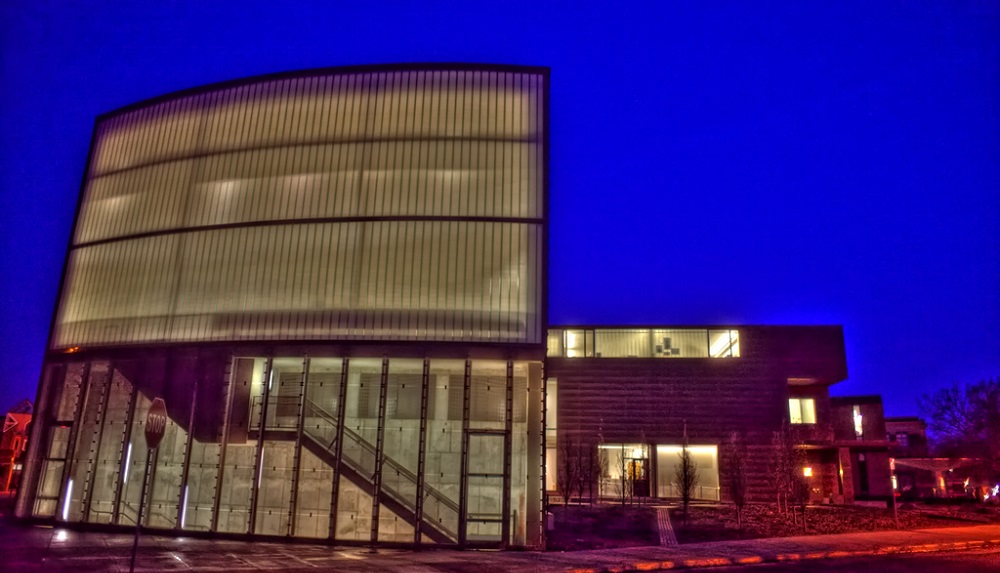The Minneapolis offices of HGA Architects and Engineers (HGA) and Perkins+Will have been approved as partners with the University of Minnesota College of Design in the Upper Midwest hub of the National Resilience Initiative (NRI) network.
Established in 2013 by the Clinton Global Initiative, the NRI network was created to help local communities prepare for the impacts of natural disasters and climate change. The American Institute of Architects Foundation, along with the AIA and the Association of Collegiate Schools of Architecture, made this announcement.
The hub will be housed within the Center for Sustainable Building Research (CSBR), part of the College of Design at the University of Minnesota.
“In the coming decades, the ability to help cities and towns address and prepare for climate change will be of paramount importance, in order to ensure the resilience and sustainability of our communities,” Tim Carl, FAIA, Chief Executive Officer, HGA, said in a statement.
HGA has a history of projects that focus on resiliency, sustainability and community engagement and is researching and implementing resilient design strategies around external risks--climate change, security risk, infrastructure disruptions, and natural disaster--that have the potential to interfere with delivery of critical services.
Dave Dimond, FAIA, Director of Design for the Minneapolis office of Perkins+Will, said his firm is eager to partner with HGA and the College of Design.
“Time is of the essence for resilience thinking to move into the mainstream of building and community design,” he said in a statement.
Perkins+Will has worked with the College of Design on interdisciplinary research and new practices that address resilience and sustainable community design. The firm led the research and development of the new global metric on resilience known as RELi. The RELi Action List & Credit Catalog is used for systematic thinking in the design of communities as they respond to weather extremes, economic disruption and resource depletion.
The Upper Midwest hub includes the School of Architecture and Department of Landscape Architecture in partnership with the Center for Changing Landscapes, the Institute on the Environment, and the Resilient Communities Project in the Center for Urban and Regional Affairs. Design Intelligence, in its 2016 America's Best Architecture & Design Schools survey, ranked the sustainable design program in the College of Design’s School of Architecture #5 in the nation.
The national NRI network consists of six university-based design centers located at the University of Minnesota, California Polytechnic State University, Hampton University, Mississippi State, The University of Arkansas, and the New Jersey Institute of Technology.
Related Stories
Adaptive Reuse | May 15, 2024
Modular adaptive reuse of parking structure grants future flexibility
The shift away from excessive parking requirements aligns with a broader movement, encouraging development of more sustainable and affordable housing.
MFPRO+ News | May 10, 2024
HUD strengthens flood protection rules for new and rebuilt residential buildings
The U.S. Department of Housing and Urban Development (HUD) issued more stringent flood protection requirements for new and rebuilt homes that are developed with, or financed with, federal funds. The rule strengthens standards by increasing elevations and flood-proofing requirements of new properties in areas at risk of flooding.
K-12 Schools | Apr 30, 2024
Fully electric Oregon elementary school aims for resilience with microgrid design
The River Grove Elementary School in Oregon was designed for net-zero carbon and resiliency to seismic events, storms, and wildfire. The roughly 82,000-sf school in a Portland suburb will feature a microgrid—a small-scale power grid that operates independently from the area’s electric grid.
Resiliency | Apr 22, 2024
Controversy erupts in Florida over how homes are being rebuilt after Hurricane Ian
The Federal Emergency Management Agency recently sent a letter to officials in Lee County, Florida alleging that hundreds of homes were rebuilt in violation of the agency’s rules following Hurricane Ian. The letter provoked a sharp backlash as homeowners struggle to rebuild following the devastating 2022 storm that destroyed a large swath of the county.
Codes and Standards | Apr 8, 2024
Boston’s plans to hold back rising seawater stall amid real estate slowdown
Boston has placed significant aspects of its plan to protect the city from rising sea levels on the actions of private developers. Amid a post-Covid commercial development slump, though, efforts to build protective infrastructure have stalled.
Codes and Standards | Mar 18, 2024
New urban stormwater policies treat rainwater as a resource
U.S. cities are revamping how they handle stormwater to reduce flooding and capture rainfall and recharge aquifers. New policies reflect a change in mindset from treating stormwater as a nuisance to be quickly diverted away to capturing it as a resource.
Building Tech | Feb 20, 2024
Construction method featuring LEGO-like bricks wins global innovation award
A new construction method featuring LEGO-like bricks made from a renewable composite material took first place for building innovations at the 2024 JEC Composites Innovation Awards in Paris, France.
Sponsored | BD+C University Course | Jan 17, 2024
Waterproofing deep foundations for new construction
This continuing education course, by Walter P Moore's Amos Chan, P.E., BECxP, CxA+BE, covers design considerations for below-grade waterproofing for new construction, the types of below-grade systems available, and specific concerns associated with waterproofing deep foundations.
Concrete | Jan 12, 2024
Sustainable concrete reduces carbon emissions by at least 30%
Designed by Holcim, a building materials supplier, ECOPact offers a sustainable concrete alternative that not only meets, but exceeds the properties of standard concrete.
Roofing | Jan 8, 2024
Researchers devise adaptive roof tile concept that adjusts to ambient temperatures
Scientists at the University of California Santa Barbara published a paper that proposes adaptive roof tile technology that can adjust to ambient temperatures. Using a wax motor, tiles could switch from a heating or cooling state enabling savings on heating and cooling costs.
















